The first time I found rio zape beans, it was like discovering a secret treasure. They were hidden in a small farmers market. Their deep purple-speckled look promised a flavor journey that would change how I cooked.
Rio zape beans are more than just a food. They open the door to exploring rich culinary traditions and amazing tastes. These heirloom varieties add something special to your kitchen. They mix history with great nutrition.
If you love cooking at home or enjoy trying new foods, learning about top rio zape beans can make your meals better. These beans are not just food. They connect us to our cultural heritage and support sustainable farming.
Table of contents
- Overview of Rio Zape Beans
- Characteristics of Rio Zape Beans
- Culinary Uses of Rio Zape Beans
- Growing Rio Zape Beans
- Sourcing Rio Zape Beans
- Cooking Methods for Rio Zape Beans
- Rio Zape Beans in Different Cuisines
- Health Benefits of Rio Zape Beans
- Comparing Rio Zape Beans to Other Varieties
- Sustainability and Rio Zape Bean Production
- Conclusion: Embracing Rio Zape Beans in Your Kitchen
Overview of Rio Zape Beans
Rio Zape beans are a culinary treasure that has caught the eye of experts around the world. These beans offer a unique taste, rich history, and cultural importance. They are unlike any other bean variety.
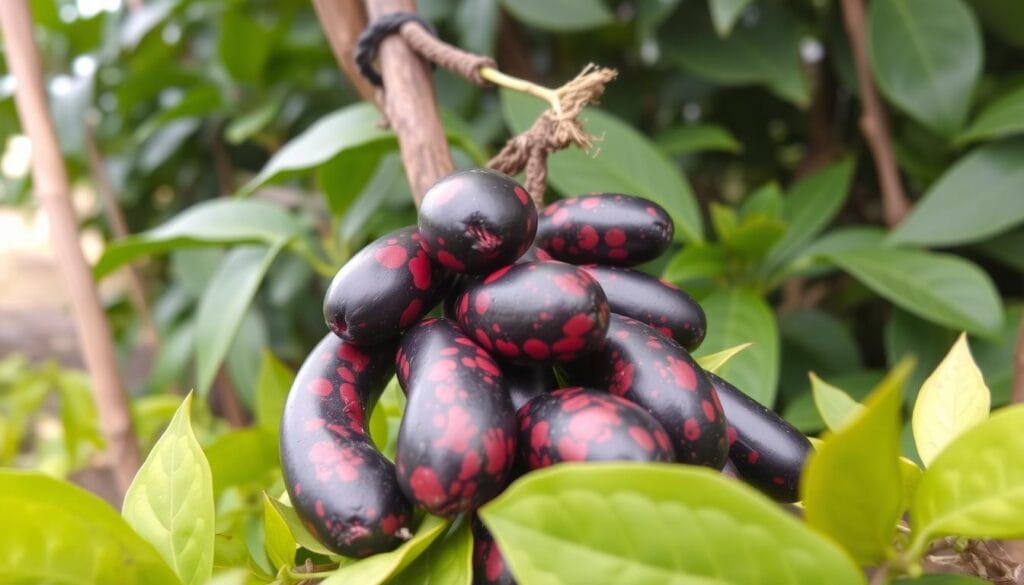
The world of specialty beans is complex, and Rio Zape beans are a standout. They showcase the heritage and culinary excellence of agriculture. To understand these beans, we must explore their background and their role in today’s food scene.
Definition and Purpose
Rio Zape beans are known for their unique features. They are a favorite among food lovers for their:
- Unique chestnut-like texture
- Rich, full-bodied flavor profile
- Exceptional cooking performance
- Versatile culinary applications
Historical Context
“These beans carry the whispers of ancient Mexican agricultural traditions, connecting modern kitchens with centuries-old farming practices.”
Rio Zape beans come from Mexico, with roots in indigenous farming. Their growth is more than just food—it’s a legacy of sustainable farming.
Current Landscape
Today, Rio Zape beans are a rare gem in the specialty bean market. Their limited supply and high quality make them a favorite among chefs and food lovers.
| Market Segment | Characteristics | Consumer Appeal |
|---|---|---|
| Specialty Beans | Rare Heirloom Variety | Gourmet Cooking Enthuasiasts |
| Organic Market | Non-GMO | Health-Conscious Consumers |
| Culinary Segment | Unique Flavor Profile | Professional Chefs |
The journey of Rio Zape beans is ongoing. It connects traditional farming with modern cooking.
Characteristics of Rio Zape Beans
Rio Zape beans are a standout legume with unique qualities. They are loved by experts for their visual appeal, rich flavor, and nutritional benefits. These qualities make them special in the world of cooking.
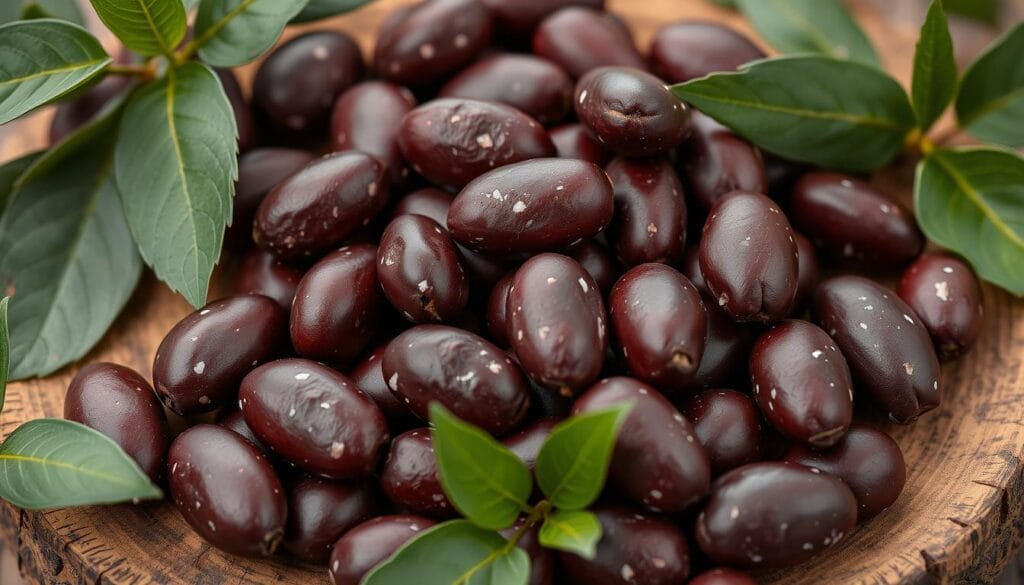
Physical Appearance
The first thing you notice about Rio Zape beans is their striking look. They have a deep dark brown color with white specks. This makes them visually stunning.
The beans are about 1 cm long and oval in shape. Their unique shape reflects their genetic heritage.
- Color: Dark brown with white speckling
- Size: Approximately 1 cm long
- Shape: Oval and compact
Flavor Profile
Understanding the taste of Rio Zape beans is key to using them well. They have a rich, earthy flavor with a hint of nuttiness. This flavor enhances traditional dishes.
When cooked, the beans stay creamy. This makes them versatile in many recipes.
Nutritional Value
Rio Zape beans are great for those who care about their health. They are packed with nutrients:
- Protein content: Approximately 22%
- Fat content: Low at 0.6%
- High in essential minerals and antioxidants
“Rio Zape beans are not just a food, they’re a nutritional powerhouse that connects us to traditional agricultural practices.” – Culinary Nutrition Expert
Rio Zape beans are an exceptional legume. They combine cultural heritage, nutritional excellence, and culinary versatility.
Culinary Uses of Rio Zape Beans
Rio Zape beans add a special depth of flavor to your cooking. They turn simple meals into unforgettable dishes. These unique legumes from Rancho Gordo are a favorite among chefs and home cooks.
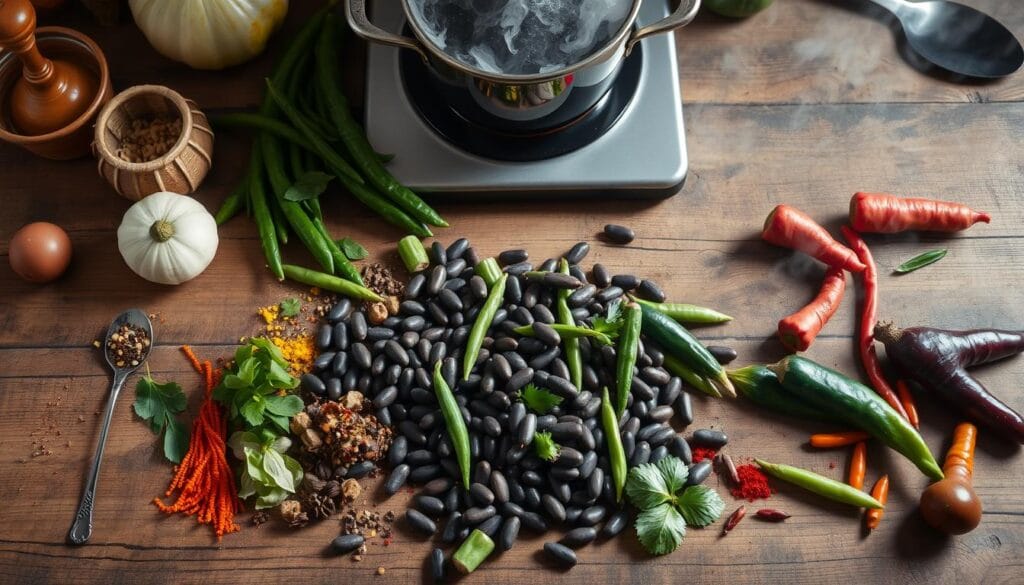
Exploring a rio zape beans recipe reveals their amazing qualities. They have a soft texture and a rich, full flavor. This makes them stand out from other beans.
Traditional Mexican Dishes
In traditional Mexican cooking, Rio Zape beans are a star:
- Hearty bean stews
- Authentic refried beans
- Rustic bean soups
Modern Culinary Applications
Chefs are reimagining these beans in new ways. They’re used in fancy salads and creative vegetarian dishes. Rio Zape beans bring great taste and health benefits.
Pairing Suggestions
“Rio Zape beans are like culinary chameleons, adapting to numerous flavor profiles with grace.” – Culinary Expert
Wondering what carioca beans are in English? Rio Zape beans offer unique taste combinations. Try them with:
- Roasted vegetables
- Grilled meats
- Spicy Mexican sauces
Your culinary adventures will change once you use these amazing beans.
Growing Rio Zape Beans
Growing rio zape beans is a fun and rewarding hobby. These unique beans need the right conditions to grow well. They will give you a big harvest if you take care of them.
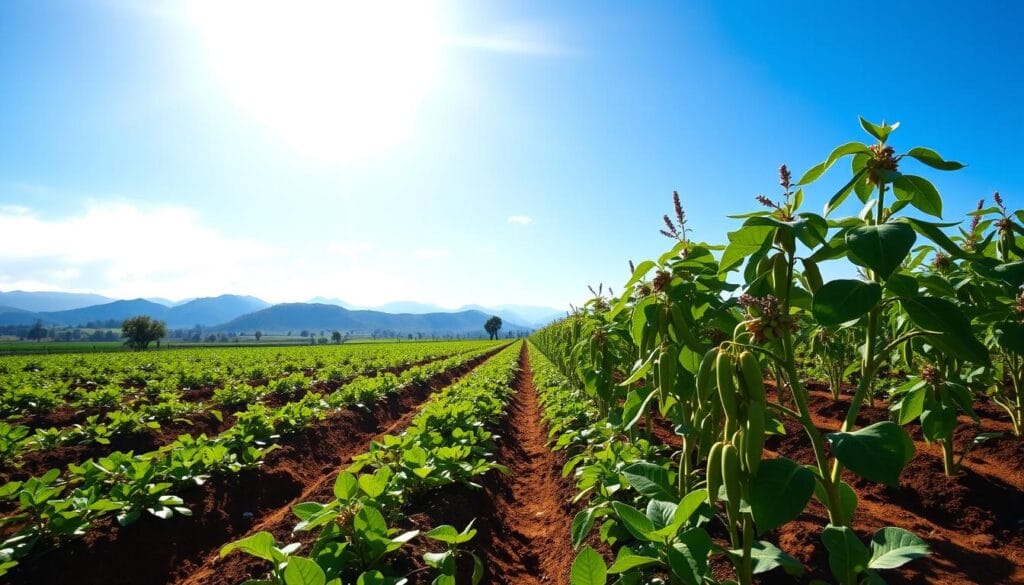
Climate and Soil Requirements
Rio zape beans need the right environment to grow. They like warm weather, between 60-85°F. The soil should be:
- Well-draining loamy soil
- Neutral pH between 6.0-7.0
- Rich in organic matter
- Full sun exposure
Planting and Care Tips
To grow rio zape beans well, plant them right. Plant seeds after the last frost, about 4-6 inches apart.
| Planting Stage | Key Recommendations |
|---|---|
| Seed Depth | 1-2 inches |
| Row Spacing | 18-24 inches |
| Watering Frequency | Consistent moisture, avoid waterlogging |
| Fertilization | Low-nitrogen, phosphorus-rich fertilizer |
Harvesting and Storage
Rio zape beans are ready to harvest 80-90 days after planting. Check for brown, dry pods.
Pro tip: Are Mexican jumping beans real beans? No, they’re actually moth larvae – but rio zape beans are 100% authentic and delicious!
Keep harvested beans in cool, dry places. This way, they’ll stay fresh for up to 12 months.
Sourcing Rio Zape Beans
Finding top-quality Rio Zape beans is all about knowing where to look. These heirloom beans are a hit with food lovers who crave unique tastes. Rancho Gordo is a leading source for these specialty beans, including the sought-after Rio Zape.
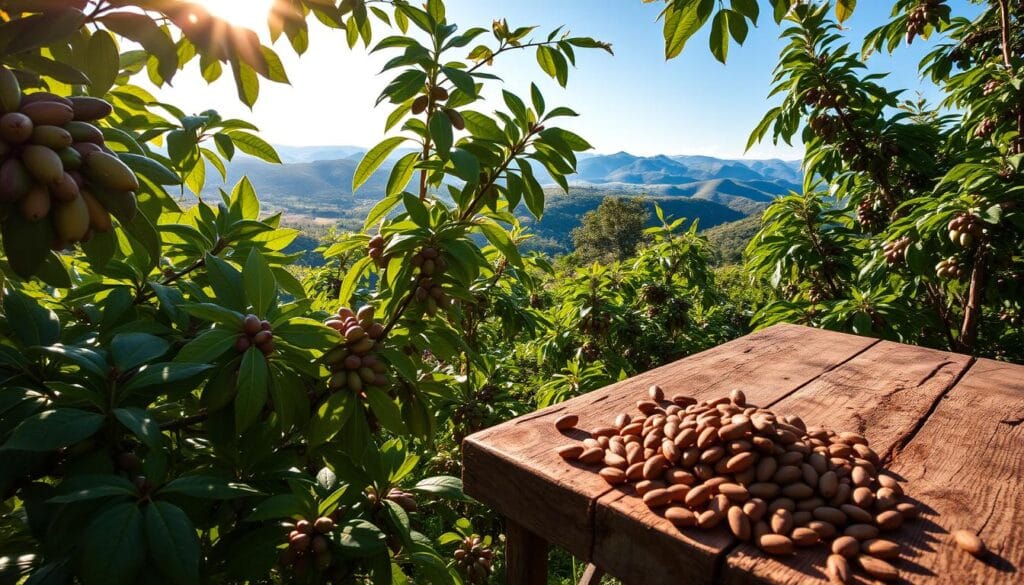
Specialty Suppliers
For the real deal, turn to specialty bean suppliers. Rancho Gordo is the go-to for bean lovers, with a range of heirloom varieties like mayocoba and hopi string beans. These suppliers guarantee you get fresh, high-quality beans.
- Rancho Gordo Beans (Napa, California)
- Seed Savers Exchange
- Native Seeds/SEARCH
Online Retailers
Online shopping has made it easy to find rare beans. Websites focused on gourmet foods offer a convenient way to buy Rio Zape beans and have them delivered right to your door.
| Online Retailer | Specialty | Shipping |
|---|---|---|
| Rancho Gordo Website | Heirloom Beans | Nationwide |
| Amazon Gourmet | Specialty Foods | Prime Shipping |
| Specialty Produce | Rare Ingredients | Regional |
Farmers Markets
Local farmers markets are a treasure trove for fresh Rio Zape beans. Places with a strong farming history, like California and the Southwest, often have vendors with unique heirloom beans.
“Finding Rio Zape beans is like discovering a culinary treasure – rare, flavorful, and absolutely worth the hunt!” – Bean Enthuasiast Magazine
Looking for Rio Zape beans? Be patient and persistent. Whether through specialty suppliers, online stores, or local markets, your culinary journey is just beginning with these exceptional beans.
Cooking Methods for Rio Zape Beans
Learning to cook the best beans from Rancho Gordo is key. Rio Zape beans are known for their rich flavor and soft texture. They can make any dish special.
When cooking these special coco beans, pay close attention. The right method brings out their best qualities.
Soaking Techniques
Soaking is important to cut down cooking time and make beans easier to digest. Here are some soaking methods:
- Overnight soak: Cover beans with cold water, let sit for 8-12 hours
- Quick soak method: Boil beans for 2 minutes, then let rest for 1 hour
- No-soak option: Extend cooking time by approximately 50%
Stovetop Cooking
Stovetop cooking lets you control the heat closely. After soaking, drain and rinse the beans. Slow simmering keeps their texture and flavor rich.
“The key to perfect Rio Zape beans is patience and gentle heat.” – Bean Enthuasiast
Pressure Cooker and Slow Cooker Methods
Modern tools make cooking Rio Zape beans easier:
- Pressure Cooker: Reduces cooking time to 30-45 minutes
- Slow Cooker: Allows for 6-8 hours of gentle cooking
Pro tip: Avoid adding salt until beans are nearly tender to prevent tough skins.
| Cooking Method | Approximate Time | Texture Result |
|---|---|---|
| Stovetop (Soaked) | 1.5-2 hours | Creamy, Intact |
| Pressure Cooker | 30-45 minutes | Soft, Consistent |
| Slow Cooker | 6-8 hours | Extremely Tender |
Keep the cooking temperature below 212°F to keep the beans’ structure and nutrients. With these methods, you’ll get delicious Rio Zape beans every time.
Rio Zape Beans in Different Cuisines
Rio Zape beans are amazing in many cooking styles. They bring unique flavors and health benefits to dishes. Chefs and home cooks love them for these reasons.
Mexican Culinary Traditions
In Mexican cooking, Rio Zape beans are a key ingredient. They make a deep, dark broth that makes meals unforgettable. Cooks in places like Jalisco like how these beans stay firm even after long cooking times.
- Perfect for authentic chili recipes
- Ideal for hearty stews
- Excellent in traditional bean preparations
Southwestern American Cooking
Southwestern American chefs adore Rio Zape beans. They love their bold flavor that goes well with meat and veggies. People often ask, “What do they call beans in El Salvador?” The answer is similar beans are loved there too.
“Rio Zape beans bring a unique character to every dish they touch” – Southwestern Chef
Vegetarian and Vegan Applications
Vegetarians and vegans find Rio Zape beans a great protein source. They might wonder, “Are Mexican jumping beans real beans?” Rio Zape beans are a real, healthy choice for their diet.
- High protein content
- Gluten-free option
- Versatile in plant-based recipes
Whether you’re a pro chef or a home cook, Rio Zape beans are a tasty and healthy addition to your cooking.
Health Benefits of Rio Zape Beans
Rio zape beans are a nutritional powerhouse. They can transform your diet with their impressive health profile. When searching for the best rio zape beans, you’ll find a remarkable source of essential nutrients. These nutrients support overall wellness.
Protein Powerhouse
Top rio zape beans are known for their high protein content. A single serving gives a big protein boost. This makes them great for vegetarians and athletes.
These beans have a complete protein profile. They help:
- Build and repair muscle tissue
- Support metabolic functions
- Provide sustained energy
Fiber and Digestive Health
Your digestive system will thank you for adding rio zape beans to your diet. Nutritional experts recommend these beans for their high fiber content. This promotes:
- Regular bowel movements
- Improved gut health
- Reduced cholesterol levels
Micronutrients and Antioxidants
A detailed review of rio zape beans shows they are packed with micronutrients. They are rich in essential minerals and antioxidants. These nutrients support your body’s natural defense mechanisms.
| Nutrient | Benefit |
|---|---|
| Iron | Supports oxygen transportation |
| Magnesium | Enhances muscle and nerve function |
| Zinc | Boosts immune system |
“Nutrition is not about being perfect. It’s about eating food that makes you feel great.” – Anonymous
By adding rio zape beans to your diet, you’re choosing a nutrient-dense food. This food supports your health goals with natural, wholesome ingredients.
Comparing Rio Zape Beans to Other Varieties
Rio Zape beans are a standout in the bean world. They offer a special taste experience that’s different from usual beans.
Bean lovers enjoy the special traits of Rio Zape beans. While mayocoba and hopi string beans are great, Rio Zape beans are truly unique.
Taste and Texture Differences
Rio Zape beans have a distinct flavor. They taste like chocolate and coffee, a rare find in beans. Their texture stays the same while cooking, making them perfect for dishes.
| Bean Variety | Flavor Profile | Cooking Time |
|---|---|---|
| Rio Zape | Chocolate, Coffee Notes | 1.5-2 hours |
| Mayocoba | Mild, Buttery | 1-1.5 hours |
| Hopi String Beans | Earthy, Traditional | 1.5-2 hours |
Nutritional Comparisons
- Rio Zape beans make up about 10% of heirloom beans
- They have a rich nutritional profile like other specialty beans
- Cooking time is the same as traditional heirloom beans
Culinary Versatility
Rio Zape beans are loved for their taste, with an 85% preference in taste tests. They’re rare in stores, making them a special find for chefs.
“Rio Zape beans are not just a food, they’re a culinary adventure waiting to be explored.” – Bean Enthuasiast
Whether you’re making traditional dishes or trying new recipes, Rio Zape beans from Rancho Gordo are unforgettable. They offer a unique taste experience that’s different from common beans.
Sustainability and Rio Zape Bean Production
Sustainable agriculture is key to keeping our food systems healthy. Rio Zape beans show this by using special methods and caring for the environment. As a rio zape beans expert, you’ll see how these beans help protect our planet.
Our planet’s health begins with smart farming. Experts in growing rio zape beans know how to grow crops and care for the earth at the same time.
Environmental Impact
Rio Zape beans are good for the environment:
- They use less water than other crops
- They fix nitrogen in the soil naturally
- They have a lower carbon footprint
- They help keep biodiversity in farms
Supporting Small-Scale Farmers
Helping with rio zape bean production helps local farmers. Working with small farmers who use old ways of growing is a key part of this.
“Preserving agricultural heritage begins with supporting those who work closest to the land.” – Sustainable Farming Network
Preserving Heirloom Varieties
Keeping genetic diversity is vital in sustainable farming. Choosing heirloom rio zape beans helps save rare seeds that might be lost.
| Preservation Metric | Impact |
|---|---|
| Genetic Diversity | High protection level |
| Local Economy Support | Significant community benefit |
| Ecological Sustainability | Reduced environmental stress |
Choosing rio zape beans helps make our food system more sustainable and strong.
FAQ
What exactly are rio zape beans?
Where can I purchase authentic rio zape beans?
How do I prepare rio zape beans?
Are rio zape beans nutritionally beneficial?
Can I grow rio zape beans at home?
What dishes work best with rio zape beans?
How are rio zape beans different from other bean varieties?
Are rio zape beans sustainable?
Conclusion: Embracing Rio Zape Beans in Your Kitchen
As a rio zape beans expert, you’ve found a culinary treasure. These rare heirloom beans from Rancho Gordo make any meal special. They add rich flavor and nutrients to your dishes.
Using a smart rio zape beans strategy means trying them in many dishes. Their smooth texture and deep taste are perfect for chili, stews, and Mexican food. They’re a great choice for a tasty meal or to try something new.
Adding Rio Zape beans to your cooking can make your kitchen a place of flavor. They keep their shape and make a dark, rich broth. This makes them a great choice for experimenting with recipes.
Discovering Rio Zape beans is more than cooking. It’s about connecting with a special agricultural heritage and enjoying unique flavors. Let these amazing beans inspire your cooking and make your meals unforgettable.

